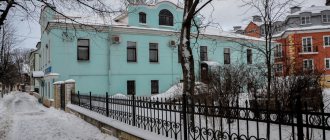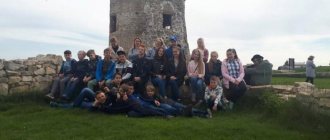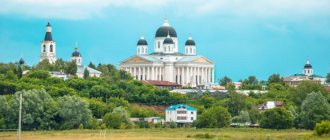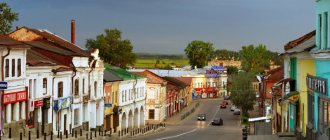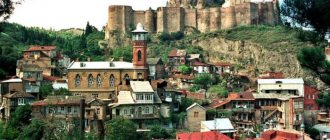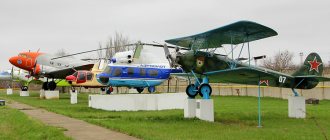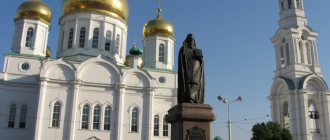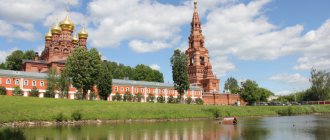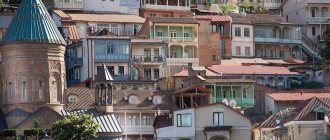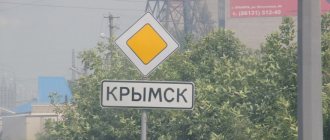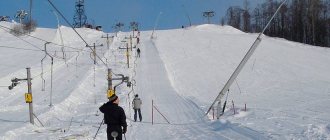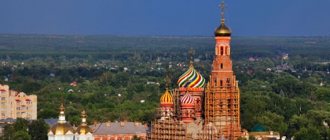In the first part, we wrote how to get to Tbilisi from Batumi independently, cheaply and comfortably, gave some useful tips and distributed the route. In this article we will try to describe the route in detail and briefly about all the attractions.
If you want to stay in Tbilisi for a few days, the Booking.com website will help you find a hotel.
Tsminda Sameba Cathedral
Our route starts from Aylabari metro station and this is its first point. Facing the metro station, turn into the left alley and go up for about ten minutes. The cathedral is located on the mountain, it is the most majestic in Tbilisi and can be seen from anywhere in the city, so you will quickly find your bearings.
Its interesting name translates as Holy Trinity Cathedral, and the temple itself is quite modern (construction began in 1995), but is already considered the “building of the century.” Actually, there are a lot of temples in Tbilisi, although we will only visit the two largest and most famous ones. Read about the next one below.
What to see in Tbilisi in 2-3 days
Having visited the main attractions of Tbilisi (listed above) on the first day and having 2-3 days at your disposal, you can explore no less interesting places in the capital. Walk along relatively new avenues and squares, take a ride on the funicular and Ferris wheel, visit temples and cathedrals, explore ancient front doors.
Freedom Square
Freedom Square is the main square of Tbilisi. Over its centuries-old history, it has changed many names and appearances, remembers many events and faces. Once upon a time, merchants from different parts of the world traded their goods in the caravanserai, actors staged plays, Pushkin stayed in one of the permanent houses, a monument to Lenin stood and much more happened here. Now a 40-meter sculpture of St. George the Victorious - the Freedom Monument - has been erected on the square. Arriving in Tbilisi, you will definitely see it at least briefly while passing by taxi, but we recommend arriving there specifically to examine the sculpture, Pushkin Square and stroll along Rustaveli Avenue.
- Freedom Square coordinates: 41.693422, 44.801665
Rustaveli Avenue
Rustaveli Avenue is the central avenue of Tbilisi, was built in the 19th century and named after the Georgian poet Shota Rustaveli. The avenue is 1,500 meters long and contains a large number of historical buildings, theaters, and museums. For example, the Parliament building, Vorontsov Palace, Georgian National Museum, Griboyedov Theater, Paliashvili Opera and Ballet Theater, National Gallery of Georgia, etc. Rustaveli Avenue is a ceremonial and beautiful avenue for a leisurely walk or excursion telling the history of the buildings and the people associated with them.
- Rustaveli Avenue coordinates: 41.694170, 44.800936
Mtatsminda
The highest point in Tbilisi is Mount Mtatsminda. The tall TV tower that stands on top of Mtatsminda will be an excellent landmark. The top of the mountain offers the best views of the city. Also at the top there is a colorful restaurant and a huge amusement park. You can climb Mtatsminda by car or on foot, but the most popular option is by cable car.
- Mtatsminda Park coordinates: 41.694885, 44.786409
Pantheon
The Pantheon is located in the middle of Mount Mtatsminda. Prominent personalities of Georgian origin and others are buried in the Pantheon. For example, it is impossible to go around Griboedov’s grave where he rests with his wife Nina Chavchavadze. On the territory of the pantheon there is a temple in honor of one of the Assyrian fathers, David. Near the temple there is a spring that has healing properties.
- Pantheon coordinates: 41.695659, 44.789056
Funicular
The only funicular in Tbilisi is a red carriage that rises on rails to Mount Mtatsminda. The funicular makes a stop in the middle at the Pantheon for those wishing to exit or enter, and then rises to the top. To travel you need to purchase a special card. It is sold at the point itself and you can credit it with the amount you need. This card can also be used to pay for attractions in the park.
- Coordinates of the lower funicular station: 41.695458, 44.791808
- Opening hours: daily from 9:00 to 04:00.
Clock of the Rezo Gabriadze Marionette Theater
The Rezo Gabriadze Theater Tower attracts the attention of many tourists, and it will be of interest not only to adults, but also to children. It is a clock tower with a small theater performance showing a love story. You can watch it at 12 and 19 o'clock, and every hour the chimes are struck by a mechanical angel. Under the tower is the puppet theater of Rezo Gabriadze, and in front of it is a stylized cafe where you can enjoy coffee and dessert.
- Rezo Gabriadze Theater coordinates: 41.695758, 44.806522
Anchiskhati Temple
Anchiskhati is the oldest surviving temple in Tbilisi, built in the 6th century AD. To be even more precise, it is a three-nave basilica. It received its name in honor of the Anchi icon (a miraculous icon of Christ) transferred from the city of Anchi. The temple is located not far from the clock of Rezo Gabriadze.
- Anchiskhati Temple coordinates: 41.695543, 44.806742
Zion Cathedral
The Cathedral of Zion is named after Mount Zion in Israel. One of the main and favorite temples of Tbilisi and Georgia, was founded in the 7th century AD. It is in Sioni that the cross of St. Nino, Equal to the Apostles, is kept, one of the main Orthodox relics of Georgia.
- Sioni Temple coordinates: 41.691301, 44.807308
Shardeni street
Shardeni Street is famous for the fact that you can always find somewhere to have fun; many bars, cafes, restaurants, clubs, including cellars, will be at your disposal. Once on Shardeni you will come across a sculpture of a sitting man with a horn in his hand, this sculpture is called “Toastmaster”, he is an enlarged copy of a figurine found during archaeological excavations which dates back to the 7th century BC. e.
- Shardeni coordinates: 41.690726, 44.807783
Tsminda Sameba Cathedral
Tsminda Sameba is the Cathedral of the Holy Trinity in Tbilisi, consecrated in 2004. The largest and main cathedral in Georgia, it amazes with its size (101 meters high and 40 meters deep), decoration and views from its observation deck. Like the temple, its territory is very beautiful, there are many paths, vegetation, swans swim. And here is the famous Lagidze Water Cafe, which serves delicious Georgian lemonade.
- Sameba coordinates: 41.697538, 44.816115
Kashveti Church
The Kashveti Church is located on the central Rustaveli Avenue in front of the parliament. The church in honor of St. George is very beautifully painted on the inside. Kashveti may seem like a very ancient temple, but it actually dates back to the 20th century. The church was built in the old Georgian style, so this is a great opportunity to see and appreciate the beloved temple of the capital’s residents.
- Kashveti coordinates: 41.697916, 44.799120
Sololaki District
One of the historical and prestigious districts of Tbilisi where the local nobility and aristocracy lived. The Sololaki district has preserved most of its historical buildings, and if you are a connoisseur of architectural works, you can touch the flavor of the city through the Gothic style, mansions that belonged to wealthy merchants, front doors, spiral staircases, etc.
- Sololaki coordinates: 41.689280, 44.805777
David Agmashenebeli Avenue
The restored and completely pedestrian David Agmashenebeli Avenue delights its guests with beauty and freshness. There are many cafes, hookah bars and restaurants on the avenue with cuisines from different countries. If you look closely and look around, you can see various creative art objects, such as hanging multi-colored umbrellas, a dog made of wire, etc.
- Agmashenebeli Avenue coordinates: 41.707762, 44.798691
Presidential palace
The presidential residence is located very close to the Sameba Cathedral. To look at it, you need to go down the stairs, which are located on the back side of the temple, then turn left and, having reached the first alley, go down again. It seems something like this, if you remember the road correctly.
After walking 200 meters, a huge building with a glass dome will become noticeable. Of course, no one will let you inside, but you can admire the outside, especially since it’s along the road. We only managed to get here at night, so we didn’t get a chance to look much further and the photos didn’t turn out very well.
It’s unlikely that anyone is interested in the history of the construction and design of the residence, so let’s just say that from the beginning they wanted to restore it, then they decided to completely redo it.
Food
Georgian cuisine is tasty, cheap and versatile. In Tbilisi you can have a hearty and inexpensive meal. Traditional Georgian dishes: puri (bread), khachapuri (flatbread with cheese), chvishtari (corn baked goods), dzhonjoli (pickled flowers of some plant), badrijani (eggplant rolls), pkhali, khinkali, dolma, mtsvadi (kebab), lobio, chashushuli (stewed veal), chakapuli (meat with spices), churchkhela, chiri (dried persimmon). The meal is accompanied by chacha, a glass of Georgian wine and a glass of mineral water.
Abanotubani District
Metekhi Temple
As you go down the cobblestones, you will notice small interesting cafes and a wine shop, where the owners will kindly and persistently invite you. Then you will have a beautiful view of the famous Peace Bridge, Rike Park and Metekhi Temple, which is what we are going to see.
Once upon a time, a large Metekhi Palace stood on this rock, on the territory of which a temple that has survived to this day was built in the 12th century. Unfortunately, only one wall remains of the castle; you will see it as you go up to the temple.
Metekhi Temple is considered the hallmark of the centuries-old and difficult history of Tbilisi, as it was destroyed many times. The rulers of Georgia constantly made every effort to restore it, which is why it is so well preserved.
At the beginning of the 19th century, the castle was converted into a royal prison, then into a museum, and later they completely wanted to demolish everything that remained. But thanks to one artist who opposed and paid with his life, the Metekhi temple functions and decorates the city to this day.
This historical district of Tbilisi was christened in honor of the temple, and a monument to the founder of the city, Vakhtang Gorgasali, was erected near it.
Rike Park
We return back to the park, which was visible from the mountain. It is small in size, but with a lot of interesting little things, such as children's swings and benches, cubes and diamonds, a labyrinth and colorful flower beds, a large chessboard and a huge piano. In addition to all this, Rike Park offers entertainment with singing fountains and an amphitheater where performances take place.
For residents of Tbilisi, this is a favorite place to relax, hide from the bustle of the city and have a romantic evening, because at night everything here lights up brightly and is filled with music. For us tourists, this is another attraction of the city that definitely needs to be visited on an excursion.
Georgian Meydan
A walk along Tbilisi's Meydan is on the list of the most important things that every tourist must do. We recommend taking a camera to capture all the beauty of this place.
Georgian Meydan is rich in incredible history. Near the square there is a mosque, Levtovsky waterfall, and also a particularly must-see place – the Botanical Garden.
During your walk you will be able to enjoy the atmosphere - the architecture, white mosaics, sulfur baths and stunning views of the Metekhi Church and Narikala Fortress make the square truly magical. A large number of cafes, bars and other establishments will allow you to relax during your walk. And here you will find many interesting items that will decorate your home and become a wonderful memory of your trip.
Bridge of Peace
This huge glass bridge is a new attraction of Tbilisi, which is becoming more and more popular every year. Sometimes it is even compared to the Eiffel Tower. The comparison is certainly not exact, but who knows what will happen next.
The Peace Bridge was opened in 2010 and symbolizes the path from the past to the future, which is why it will connect the old and new areas of the city. It is considered an architectural masterpiece, but many indigenous residents do not like the new style. This is probably why they come up with different offensive names for it.
By the way, we note that not only the Bridge of Peace received a nickname, other new buildings in Tbilisi also acquired them: the House of Justice - mushrooms, the Presidential Residence - an egg, the future building of the concert hall - a worm.
Where to eat
Local residents advise eating in tourist establishments. According to them, the prices in many restaurants are not inflated, and the quality of food is better than in the “snack bars” in the courtyards.
I personally recommend 3 restaurants in Tbilisi with a good atmosphere, delicious food and reasonable prices:
- Khinkali house.
- Bernard.
- Zakhar Zakharych (the new name of the restaurant is “Dry Bridge”).
Cable car
Next we take the cable car. The views from above of the old city are unforgettable, but the main thing is to have time to take in everything, since it moves very quickly and only takes a few minutes, although the distance is not small.
In addition to being an interesting entertainment, the cable car also serves as a fast transport to the Narikala fortress. That is, together with the feeling of a bird's flight, we combine the road to our next excursion point. The cost of a one-way ride on the cable car is 2.5 GEL if you have a card.
Souvenirs
Most guidebooks direct tourists to the Dry Bridge. However, this is not the best place to buy souvenirs in Tbilisi. Unless, of course, you are a big fan of flea markets.
Prices for souvenirs in Tbilisi are the same in almost all souvenir shops. If you want to buy a funny T-shirt, a bottle of khinkali-shaped chacha, a wine horn and other classic Georgian souvenirs, head to any store in the Old Town.
For delicious gifts in Tbilisi, you should go to the Deserter Market. Buy:
- smoked suluguni;
- Georgian sauces and seasonings - tkemali, adjika;
- Svan salt;
- coffee;
- churchkhela and fruit marshmallow tklapi;
- tangerine or chestnut honey;
- feijoa and walnut jam.
Some of these souvenirs can be found in the Carrefour supermarket. Although Georgians say that all these products in supermarkets are “wrong”, and it is better to buy them at the market.
Narikala Fortress
So, we took the cable car up to the Narikala fortress, but first let’s spend a few minutes on the “Mother of Georgia” statue , which is located on the left side of the fortress.
When you finish admiring and photographing the 20-meter statue, go back, as there is nothing interesting further except couples in love.
The Narikala fortress is considered the oldest monument of the city (IV century AD) and has the best views. Here you can climb the fairly well-preserved walls, given the centuries they have survived, and take charming photos. Climb to the very top of the fortress, from where you can see everything and go to the Church of St. Nicholas, which is located on the territory.
Over its one and a half thousand years, the fortress has stood and saved many lives, and now it welcomes and delights thousands of tourists. On this lyrical note we will end with the Narikala fortress and move on.
Abanotubani or Tbilisi sulfur baths
Looking at the city from the height of the fortress, you will notice an area with round yellow-orange roofs; this is Abanotubani. To get there you need to go down a very steep cobblestone street, then turn right in the last alley and here we are. Along the way you will see many beautiful old-style houses.
All sulfur baths are built in oriental style and are located underground, so you can safely walk on their domed roofs. They say that if you take a steam bath several times, it will heal and rejuvenate you.
Legends say that Tbilisi owes its existence to these sulfur springs, since “Tbili” is warm in Georgian.
They let you have a look at every bathhouse without any problems, we went around all of them except the blue one (it was under renovation) and found out the prices. They range from 30 to 90 GEL per hour, depending on the pool, separate lounge and sauna.
There are also VIP rooms for 100-150 GEL, but you can be healed for 5 GEL in a common bathhouse with men's and women's days. If you decide to wash yourself, feel free to go around and choose the best one for you.
In this area we finish our sightseeing and go to the main avenue of Tbilisi called Shota Rustaveli.
Story
According to legend, Tbilisi was founded in the 5th century AD by the ancient Georgian king Vakhtang Gorgasali. Already in the 6th century the city became the capital of the state. Interestingly, the settlement on the site of modern Tbilisi was marked on Roman maps. In the historical center, baths dating back to the 1st century AD were discovered, as well as the remains of ancient settlements from the 3rd-4th centuries BC. The name Tbilisi (formerly Tiflis) translates as “warm”, due to the many thermal springs.
Georgian legend tells that the territory of Tbilisi was previously covered with forests, in which the ruler of the ancient Georgian state, Vakhtang I Gorgasal, hunted. He shot a bird, which fell into a hot spring and was boiled. According to another version, it was a deer that ran to the source and was healed. The king considered this a “good” sign and founded a city here.
In the 6th century, the capital of the Georgian kingdom was moved from Mtskheta to Tbilisi. In 626, the city was captured by the Khazars after a months-long siege. In 653, Georgia was subjugated by the Arabs, although Tbilisi retained some independence for almost a century. In 736 the city was captured by Arab troops. Arabs ruled Georgia until the 11th century. In 1122, Tbilisi became the capital of a united and independent Georgia.
Panorama of Tbilisi
The heyday of the Georgian kingdom lasted until the 13th century. In 1226, Tbilisi was ravaged by the troops of Jalal-Ad-Din, and in 1238 it was captured by the Mongols, who ruled Georgia until 1327. In 1366, the great plague reached Tbilisi. From the 14th to the 17th centuries the city experienced several devastations and destructions:
- In 1386, Tbilisi was captured by Timur's hordes.
- In 1444, the city was destroyed by the troops of the Kara Koyunlu state.
- In 1536, Tbilisi was captured by the Iranian army.
In 1490 (after the collapse of the Georgian state) Tbilisi became the capital of the Kingdom of Kartli. In 1578 the city was occupied by the Turks. In 1783, Georgia accepted the protectorate of the Russian Empire. Tbilisi remains the main city of the country. In 1918, Georgia's independence was declared. The independent Georgian state did not last long and already in the 30s of the 20th century the country became part of the Soviet Union. Georgia became independent in 1991 after the collapse of the USSR.
The main street of the city is Shota Rustaveli Avenue
Sometimes it seems to us that a street with this name exists in every city and village in Georgia (well, it happens very often). But we are not talking about them, but about the one and a half kilometer sights of Tbilisi.
Getting to the avenue from the Anatubani area is quite easy. You need to walk along the river for about 15 minutes to a large intersection, turn left at it and go up for another 10 minutes.
On the way you will see a funny monument to dancing Georgians, a wall that looks like a piece of a fortress and a bunch of cafes and coffee shops, and at the end of the street there is Freedom Square with the monument to St. George the Victorious.
Well, here we are at the beginning of the long-awaited Rustaveli or at the end, we don’t know for sure, and it doesn’t matter. We begin our walk along the avenue slowly and relaxed, admiring everything around us, because this is the penultimate point of our independent tour of Tbilisi.
All the first floors of the buildings are occupied by brand stores, banks and cafes. If you are not very interested in them, look up, this is the only way to notice the true beauty of this street. Along the way, among the glowing shop windows, you will meet several galleries and theaters, museums and the former parliament of Georgia.
Freedom Square
At the Freedom Square metro station you can grab coffee or ice cream to make your walk even more delicious. Now there is very active construction going on in the center, and this is especially noticeable in the square. Literally before our eyes, the Soviet GUM was demolished, on the site of which some kind of large-scale shopping center will soon be built. Pushkin Street was being restored, the Raddisson Hotel and the Pyramid were being built, about which there was a lot of fuss in the city. I would like to hope that when all the projects are completed, the square will only become more beautiful and modern architecture will not spoil the appearance of the city (although many people still have doubts about some objects).
Construction in the area of Freedom Square and Pushkin Street in Tbilisi
Opposite the entrance to the Svoboda Square metro station there is always a pot like this, brewing excellent coffee. And across the road is the National Museum
Tbilisi funicular and Mtatsminda amusement park
If you still have time and desire, take a ride on the funicular, although it is difficult to find it on foot and you will have to walk up for about 20 minutes. Therefore, it is better to take a taxi and quickly get to it for 2-3 GEL (Chonkadze St. 22).
The price of the funicular ride is 4 GEL per person one way, plus on the first trip you need to buy a travel card worth 2 GEL, which can be used by several people. It's not cheap, but believe me, it's worth it. All equipment is new and in excellent condition, which is very pleasing, especially for those who are afraid of heights.
The funicular stops once midway at the Pantheon. Here you can get out and continue the journey on foot or go back down, but it’s better to get to the end.
The final tram station at the top of the mountain, where a huge amusement park is located. Prices vary, from 2 to 10 lari. By the way, there is a television tower right there, which glows uniquely at night.
That's all, we hope you enjoy this independent and free tour of the capital of Georgia - Tbilisi. We tried to describe the entire route and its attractions as detailed and accurately as possible, but if we made a mistake somewhere, don’t judge strictly, it’s better to write to us in the comments and we will correct it.
